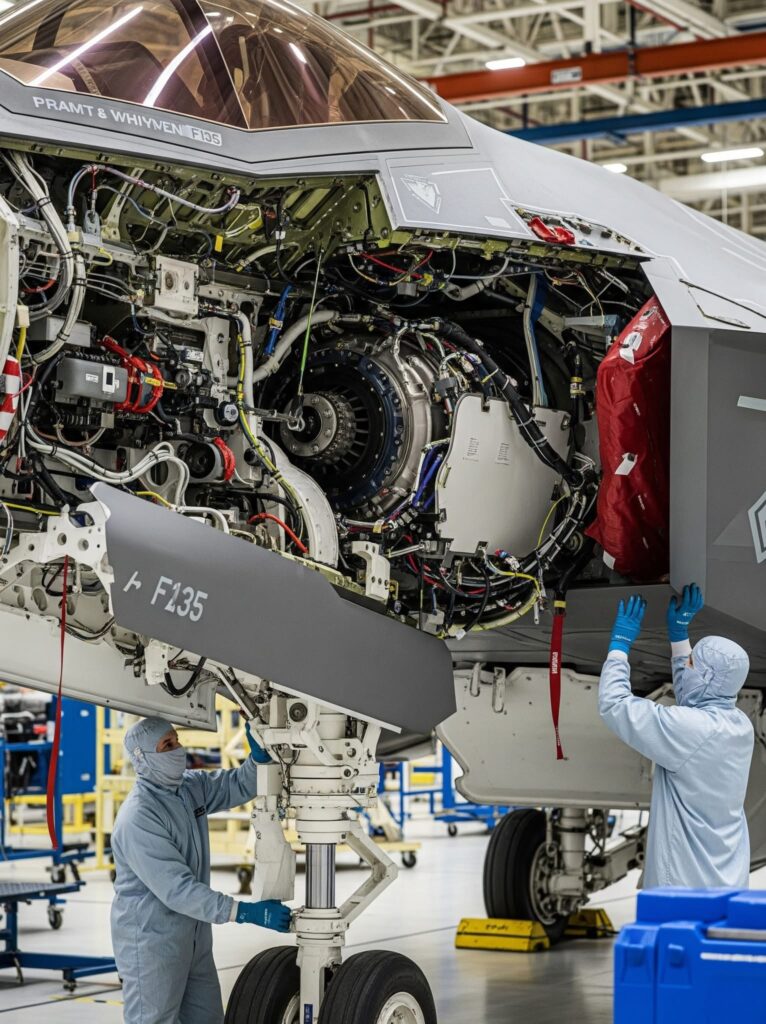
The F-35 Lightning II is one of the most advanced multirole fighters in service today, and much of its effectiveness comes from its carefully engineered structure. Designed around the principles of stealth, agility, and survivability, the aircraft’s airframe integrates modern materials, internal systems, and aerodynamic shaping to provide an unmatched combination of capabilities. Every part of the F-35’s structure is crafted with a purpose, ensuring that it can perform a wide variety of missions while remaining difficult to detect.
At the core of the aircraft is its fuselage, which forms the backbone of the design. The fuselage is sleek, featuring smooth curves and blended surfaces that scatter radar waves rather than reflecting them directly. The forward section houses advanced avionics and the AN/APG-81 AESA radar, while the cockpit sits at the center, offering the pilot excellent visibility through a bubble canopy. The midsection includes internal weapons bays, fuel storage, and access to avionics systems. By storing weapons inside the fuselage, rather than on external pylons, the F-35 maintains its stealth profile while still carrying a variety of munitions.
The wing structure is equally important. With a wingspan of just over 35 feet, the trapezoidal wings strike a balance between aerodynamic efficiency and structural strength. They are designed to provide stable handling across a wide range of speeds, from subsonic patrols to supersonic combat maneuvers. The wings also contain additional fuel tanks, which extend the aircraft’s range, and can support external hardpoints when stealth is not the primary concern. In this way, the wings contribute to both stealth and versatility.
The tail assembly features twin outward-canted vertical stabilizers paired with all-moving horizontal stabilizers. This arrangement improves control during high angles of attack and makes the aircraft more agile in close combat. The canted vertical stabilizers are angled not only for maneuverability but also for stealth, helping redirect radar waves away from their source. This tail design is part of what gives the F-35 its distinctive profile.
The cockpit and canopy are also carefully designed. The canopy is made from a strong polycarbonate material and provides an unobstructed view for the pilot. Inside, the cockpit features a minimalistic layout dominated by a single large touchscreen display. Most flight and targeting information is projected directly into the pilot’s helmet-mounted display system, reducing the need for multiple panels. Structurally, the canopy is designed without the heavy framing seen in older fighters, further contributing to stealth and visibility.
The landing gear is a tricycle arrangement with a twin-wheel nose gear and single-wheel main gear. It is built to retract smoothly into bays that close flush with the fuselage, ensuring the aircraft’s aerodynamic and stealth qualities remain intact. The carrier-based F-35C variant features stronger landing gear and a reinforced tailhook for use on aircraft carriers.
Powering the aircraft is the Pratt & Whitney F135 engine, integrated deep within the fuselage. Its air intakes are carefully shaped to minimize radar visibility while still delivering maximum airflow. The engine nozzle is also designed to reduce the aircraft’s infrared signature, making it harder for heat-seeking missiles to lock on. For the F-35B variant, a vertical lift fan system is installed within the fuselage to allow short takeoffs and vertical landings, a unique structural feature not found in the other versions.
The F-35’s structure relies heavily on advanced materials. About 35 percent of the airframe is made from carbon-fiber composites, which are lightweight yet strong. Titanium is used in high-stress sections such as the engine mounts and landing gear housings, while aluminum alloys make up much of the remaining framework. This ca


